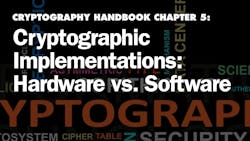Cryptographic Implementations: Hardware vs. Software (Download)
Check out the other chapters in the Communication Series: The Cryptography Handbook
Modern cryptographic algorithms can be implemented using dedicated cryptographic hardware or software running on general-purpose hardware. For various reasons, dedicated cryptographic hardware provides a better solution for most applications.
Secure Boot and Secure Download—What Are They and Why Are They Important?
Among the everyday IoT devices that use embedded hardware are:
- Home devices: Wi-Fi cameras, IoT thermostats, and smoke detectors
- Medical devices
- Wearables, fitness trackers, or smart watches
- Industrial machines such as robotic arms in factories
